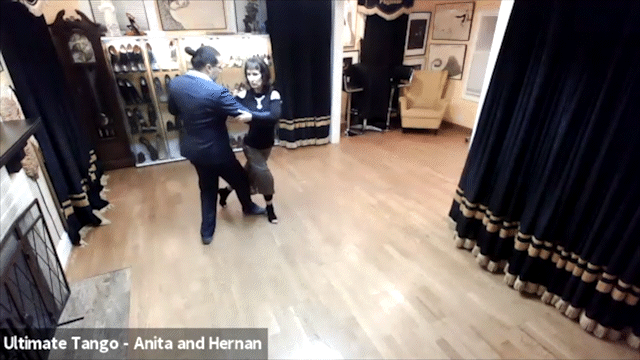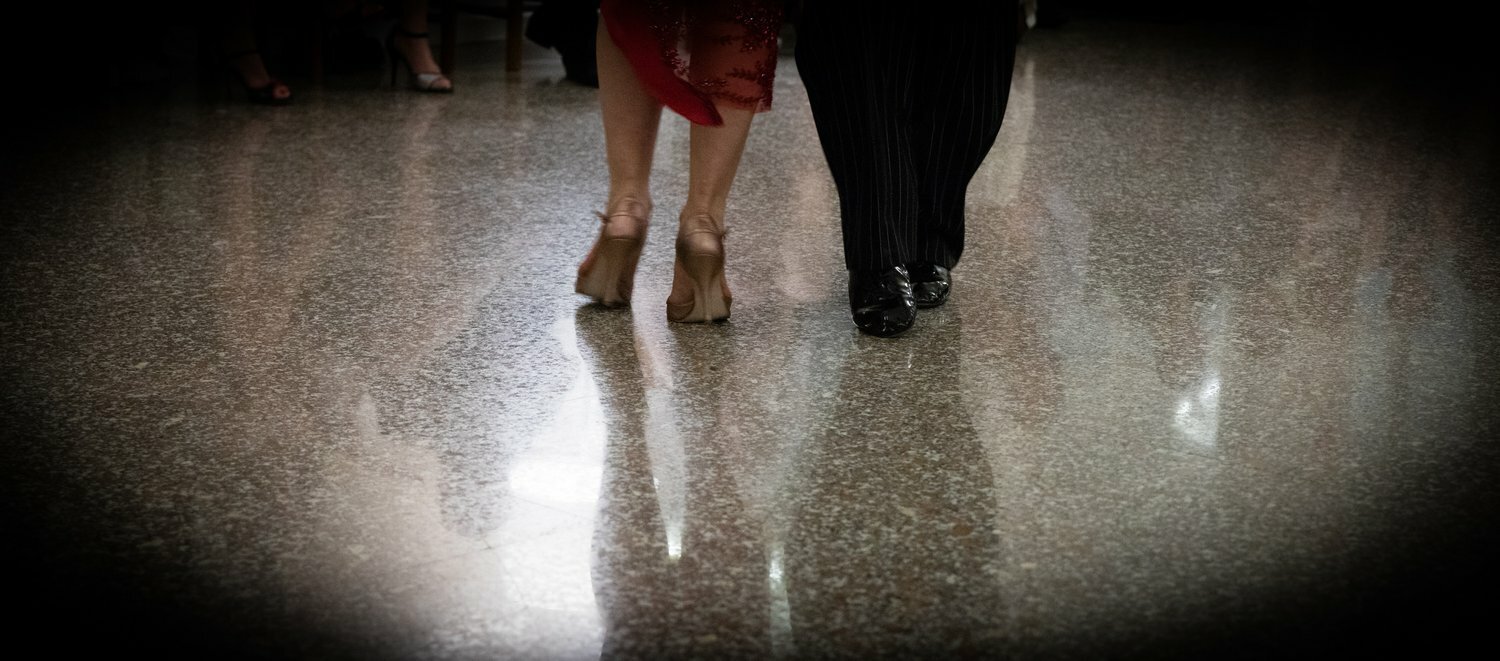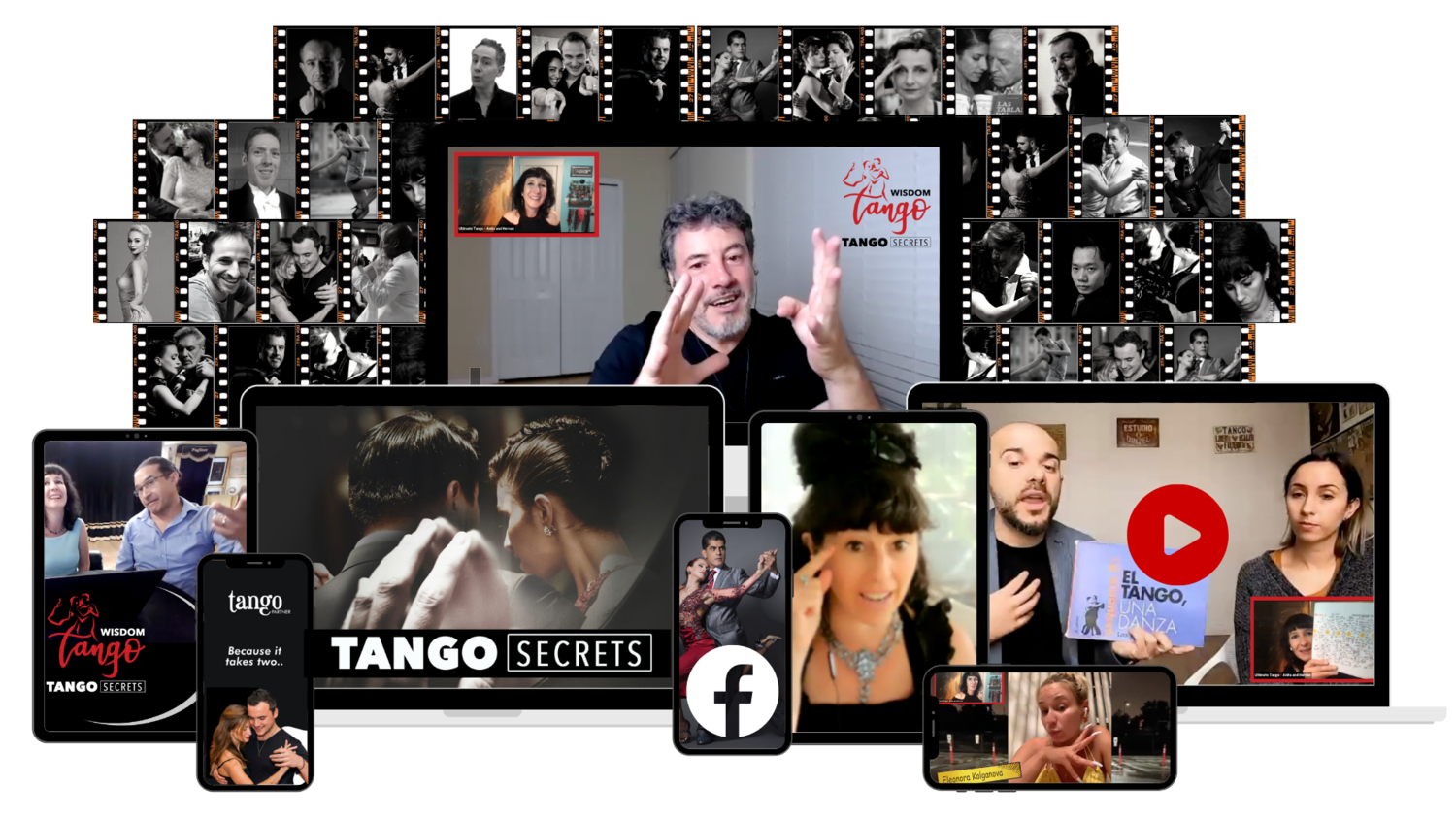It is often the case that many people want to try out tango dancing or dancing in general but are afraid that their body might not be able to balance itself properly. Others take the first step and start dancing but often complain about having no balance on the dance floor.
This begs the question: Do you need good balance in tango?

A post from tangoprinciples.org provides an apt explanation: “Few will deny that good balance is an aspect of good dancing and good body movement in general. Internally, a well-balanced body feels calm and steady, none of its movements feel out of control, it never feels like it is about to fall, even in the midst of vigorous physical activity.
Balanced walking is what enables one to slow down and explore a more sophisticated musicality in tango dancing. It is also essential for the quality of stillness in partner connection.
Balance on one foot is essential for female tango dancers for their part includes many pivots, voleos, and one-footed stops. But it is also important for the men, especially if they wish to do one-footed turning or twisting figures.”
As much as balance is necessary for dancing tango, as well as in gaining a full appreciation of it, the reality is that many aspiring or novice dancers struggle with balance. Believe it or not, even those who have been practicing tango for years can have difficulty finding their balance as well. This is perhaps the consequence of not being able to walk the way the body is meant to.
Yes - you need to be able to manipulate your axis and I will show you how” - from Tango Secrets Chat with Damian Esell, GhostLeader. | Tango Secrets - a conference about the Methodology and Philosophy of Argentine Tango. Know MORE!
The same post from tangoprinciples.org explains that truly balanced walking is not so much about technique as it is a “much more difficult and involved process of recovering the natural walk — the one that the body was designed for.”
How does one then find the proper balance and coordinate the body to move in a natural way?

Illustration by Tina Rosados for our still-in-writing book about Tango Fundamentals.
Defining Balance in Dancing
Before delving into how balance can be achieved in dancing, one must first be aware of what balance in dancing means.
According to The Physics Of Dance, “Balance is all about gravity and your center of gravity. In order to stay completely balanced, your center of gravity must be directly above the area of contact you have with the floor. That’s why when you balance larger objects onto smaller objects, you tend to place that object in the middle so that it is equal on both sides, meaning it is completely balanced.
If you place one side of the larger object onto the small object, the larger object will fall, showing that it is unbalanced. Balance and gravity also work with more than one person (partner work is the ‘dance’ term).”

Try Classy Heels - crazily challenging solo workout focused on improving your balance, speed, memory, ability to memorize choreography, and of course musicality
The same post further explains that balance in dancing does not require force or torque to support the dancer as a dancer’s momentum and angular momentum, respectively, do not change.
Similarly, a post from revbalance.com states that the “balance needed to stand and walk requires you to activate large muscle groups, but
the balance required in dance and gymnastics requires you to gain control of even the smallest of muscles and joints. [...]
Both dance and gymnastics require masterful control over your core and center of gravity, as well as hyper-targeted control of many areas of the body that most do not need to train. This includes the feet, ankles, knees, hips, and even your neck and head.”
From these definitions, one could then understand that
balance in dancing does not merely involve the feet, but has much to do with the entire body system’s muscle control, as well as gravity and proper weight shifting.
That said, what should be done to properly improve one’s balance?

Ways To Improve Your Balance in Dancing Tango
There are various activities and exercises one can perform to achieve balance, specifically when dancing the Argentine tango. Most can be done individually, as it is of utmost importance to first connect with oneself and one’s body if one wants to achieve balance and a better overall experience in dancing tango.
If one’s individual balance is unstable, it can significantly affect one’s partner by causing them to tilt, trip, or stumble.
A post from Paul Yang aptly illustrates this point: “Tango has a unique balance problem because the two partners intimately lean on each other to form an A-shaped frame.
The A-shaped frame is a stable frame in which the partners support each other. A novice woman often does not realize that her support for the man is equally important as his for her. If she leans backwards, she could pull him off his balance, which is a common problem for women who do not feel comfortable leaning on the man.
On the other hand, some women lean too much on the man without letting their standing leg carry most of their own weight, hence becoming heavy.”
To keep this from happening, one can try the following exercises recommended by different posts, a summary of which is outlined below:
1. WALK SLOWLY
Tango Principles suggests practicing how to walk very slowly in the way Tai Chi Chuan practitioners do. This can be done individually or with one’s partner. By being attentive to this process, one can discover a lot about excess tension in the body, as well as which muscle parts need to become more flexible and which joints lack range.
2. DO SQUATS AND LUNGES
A post from Tomas Tango explains that balance “is a combination of three systems: your vestibular system (sense of stability and spatial awareness), your vision (sight), and your proprioception (sense through which you perceive the position and movement of your body). Improving your balance requires different and complementary workouts that are specific for each of these systems. Squats and lunges target all of these systems simultaneously, which is why they are a good start.”
3. STAND ON POINT
The Physics Of Dance highlights the importance of having good balance on both the right and left sides of the body. “If they have more balance on one side than the other, it is extremely important that they build up their balance on the weaker side. Having more balance on one side than the other causes your center of gravity to be off, therefore dancers would not be able to stand on point or balance on top of each other to make a formation, etc.”
4. DO CHAIR DRILLS
Elizabeth Wartluft suggests doing a chair drill exercise to connect the core with the upper leg, and a standing chair drill to add balance to one’s core strength. The chair drill exercise involves sitting on a chair and pulling one’s leg up slowly from the core, extending it then pushing into the heel and the ball of the foot before bringing it back down. The standing chair drill is a variation of the same exercise wherein one extends the leg from the core while in a standing position.
5. PRACTICE AWARENESS
This video from Tango Space explains that when one is not dancing, one tends to have poor body awareness, which can be refined the more one dances. As a result, people place their weight on the outside of their foot, which contributes to that imbalanced or wobbly feeling.
The video then suggests a three-step process that can help correct and improve one’s balance: First, one must become aware of where one places their body weight. If it is on the outside of the foot, the second step is to counterbalance this by bringing the weight of one’s foot inside.
It is recommended to try dancing like this for a while, but not as a permanent technique, as it may cause foot pain or injury. To avoid this, one must implement the third step, which is to spread one’s weight across all the metatarsals. This way, one becomes more stable without putting undue pressure on or hurting one’s feet or ankles.
A Balancing Act
Tango dancing and improved balance have always worked hand in hand, as practicing tango regularly teaches one to become more in tune with one’s body. This is why
tango is often used as an adaptive therapy for those suffering from different health conditions, such as Parkinson’s disease, a neurodegenerative disorder that affects one’s motor skills, such as walking and turning.
In fact, an article from The Washington Post reports that “In 2005, a study out of McGill University in Montreal found that
after 10 weeks, elderly tango dancers showed boosts in everything, from self-esteem and multi-tasking to memory and motor coordination.”

The same article also reports that tango’s therapeutic effects can also help sufferers of Alzheimer’s disease as the activity aids them with memory.
Moreover, tango can even be helpful to couples undergoing counseling as
“tango’s tight embrace and backward walk require not only intimacy but communication and trust between the dance partners.”
If one is worried that one does not have enough balance in dancing, practicing tango will actually help one improve their balance as the dance is more of a progression and a journey instead of one that immediately demands mastery of the body.
The analysis started to reveal what’s happening between those two steps. That was the completion of the whole dance in abstraction. - from chat Tango Secrets Chat with Mauricio Castro. Tango Secrets - a conference about the Methodology and Philosophy of Argentine Tango. Know MORE!
“Finding one’s balance in tango then becomes a lesson that one never stops learning.”
When one does manage to find their balance, one would be able to express oneself while also giving their partner the support they need to express themselves.

Tango Secrets Summit - here directly from 20+ TangoMaestros and Researchers
